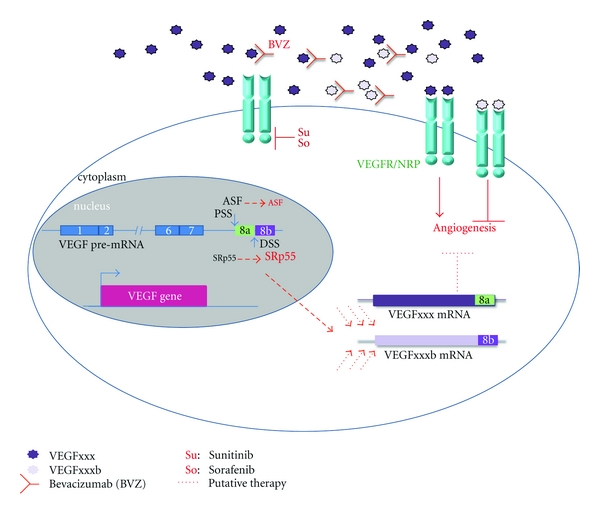Figure 2.

Existing and putative therapies targeting angiogenesis in RCC. VEGFxxx forms homodimers and interacts with their receptors inducing the activation of signalling pathways leading to increased angiogenesis. Homodimers of VEGFxxxb can bind the receptors blocking angiogenesis. However, the existence and function of potential VEGFxxx/VEGFxxxb heterodimers remain unclear. The monoclonal antibody Bevacizumab targets VEGFxxx blocking the VEGFR signalling pathways but also interacts with VEGFxxxb. Sorafenib and Sunitinib are Receptor Tyrosine Kinase inhibitors that interact with the kinase domain of VEGFR and thus inactivate the downstream signalling pathways. The VEGF gene is transcribed into a pre-mRNA that undergoes different splicing events leading to different isoforms. Splicing at Exon 8 will determinate the pro- or anti-angiogenic property of the produced protein. Hence, the use of the proximal splicing site (PSS) by in particular the splicing factor ASF/SF2 leads to pro-angiogenic -VEGFxxx- forms while the use of the distal splicing site (DSS) by another SR protein, SRp55 provides the anti-angiogenic -VEGFxxxb- forms. Combining all of this knowledge leads to propose that by acting on the VEGFxxx/VEGFxxxb ratio through the modulation of splicing, we could modify the angiogenic potential.
